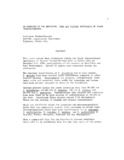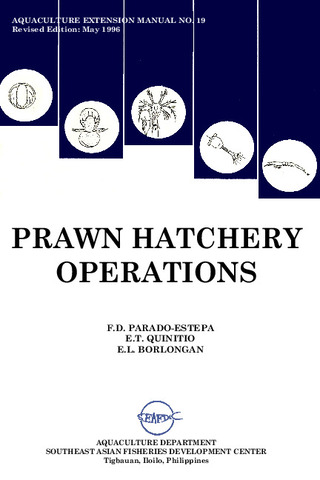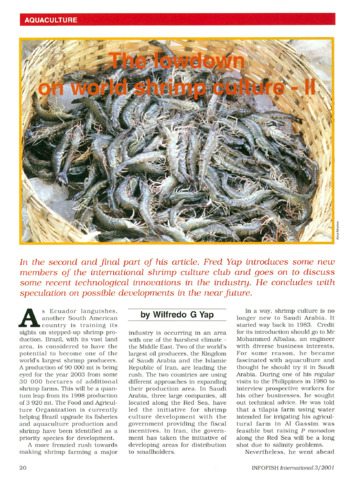Growth and fatty acid composition of Penaeus monodon juveniles fed various lipids
Share
Abstract
A 4-week feeding trial was conducted to determine the growth and fatty acid composition of Penaeus monodon juveniles fed dietary lipids from different sources. The animal lipid (cod liver oil, pork lard and beef tallow) and plant lipid (soybean oil, coconut oil and corn oil) sources were fed at 4%, 8% or 12% levels in semi-purified diets. There was no significant interaction between lipid source and lipid level (alpha = 0.05) but the weight gain and specific growth rate of prawns fed 12% cod liver oil were significantly higher than all other treatments. Prawns fed soybean oil followed and then animals fed corn oil. Coconut oil, pork lard and beef tallow were poor lipid sources for the P. monodon juveniles. The fatty acid composition of the prawns reflected that of the dietary lipids and HUFAs were incorporated more into the polar lipid fraction. The fatty acids 16:0 and 16:1 increased in prawns fed no lipids. The ratio on n3/n6 was high in prawns fed cod liver oil. For juvenile P. monodon, 2.6% dietary HUFA enhance growth; levels of 18:2n6 > 5% have a negative effect.
Suggested Citation
Catacutan, M. R. (1991). Growth and fatty acid composition of Penaeus monodon juveniles fed various lipids. The Israeli Journal of Aquaculture-Bamidgeh , 43(2), 47-56. http://hdl.handle.net/10862/1330
Subject
Taxonomic term
Collections
- AQD Journal Articles [1249]
Related items
Showing items related by title, author, creator and subject.
-
An overview of the nutrition, feed and feeding techniques of prawn penaeid/shrimps
Piedad-Pascual, Felicitas (Philippine Council for Aquatic and Marine Research and Development, 1989)This paper echoes what transpired during the first International Conference of Penaeid Prawns/Shrimps held in Iloilo City in December 4-7, 1984, particularly on the Nutrition nd Feed Development. Around 25 papers were ... -
Prawn hatchery operations
Parado-Estepa, Fe D.; Quinitio, Emilia T.; Borlongan, Emeterio L. (Aquaculture Department, Southeast Asian Fisheries Development Center, 1996-05)The manual, an updated version of the 1984 SEAFDEC/AQD manual, presents the underlying principles and step-by-step instructions of prawn larval and post-larval rearing. The techniques described are not only applicable to ... -
The lowdown on world shrimp culture - II
Yap, Wilfredo G. (INFOFISH, 2001)This paper introduces some new members of the international shrimp culture club and goes on to discuss some recent technological innovations in the industry, particularly the polyculture of tilapia (mainly Oreochromis ...




